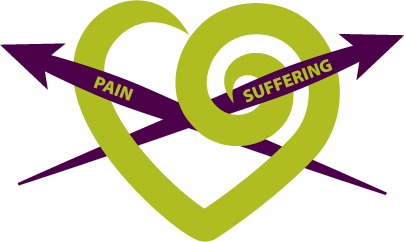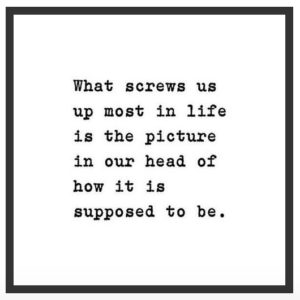
The second arrow
The parable of the second arrow is a well-known Buddhist story about skillfully dealing with painful events in life.
The Buddha once asked a student, “If a person is struck by an arrow, is it painful?”
“Yes,” replied the student.
“If the person is struck by a second arrow, is it even more painful?”
“Of Course,” replied the student.
He then went on to explain … The first arrow arises from the unavoidable events that occur in life: accidents, things break, pains, losses, aging, sickness and so on. In life, we can’t always control the first arrow. However, the second arrow is our reaction to the first event including uncomfortable physical sensations, tears, verbal outbursts, muscle tension, isolation, etc. This second arrow is often rooted in our thoughts about the event: “Why me? How do I change this? What will happen now?” We add more anguish to the mix by taking universal experiences personally and layering our past upon the unknown future.
This second arrow is optional!
Here’s an example. A few years ago my hospital changed to a new electronic health record. The learning curve was STEEP! I found myself feeling angry, unable to complete a cogent sentence about my frustration, searching for someone to blame, and literally flailing my arms and grunting. My previous anticipation and excitement of one seamless electronic record throughout our health system had so quickly turned to agitation and resentment which, (duh!), made interacting with the new EHR that much more difficult! A more wise and skillful choice would have been to take a moment and acknowledge how hard this is (for all of us) and that this is not happening to me, it is just happening.
If we pay attention, we probably face this second arrow of suffering many times in the course of a day. So this is a story about acceptance – accepting that we are not immune from pain. It is about having a choice in how to proceed after an arrow strikes us, hopefully by not adding more pain. Over time, having an awareness of this choice, and not casting second arrows at ourselves, may help liberate us from unnecessary suffering.
 Practice Idea:
Practice Idea:
This week, when you have a strong response of pain or annoyance at a situation, ask yourself … what story am I telling myself? Am I still dealing with the first arrow or have I moved into the second one? And if you have moved to the second arrow, how can you ease your suffering in this moment rather than adding to it?
About Tend Health
At Tend Health, our mission is to ensure all healthcare professionals have access to exceptional mental health care. We partner with organizations and training programs to provide low-friction, human-centered, and highly specialized support. Our doctoral-level clinicians also provide private one-on-one counseling and coaching for health professionals. Get in touch today to learn more.


 We love staying connected to our community.
We love staying connected to our community.
 Tina Runyan, PhD, ABPP
Tina Runyan, PhD, ABPP